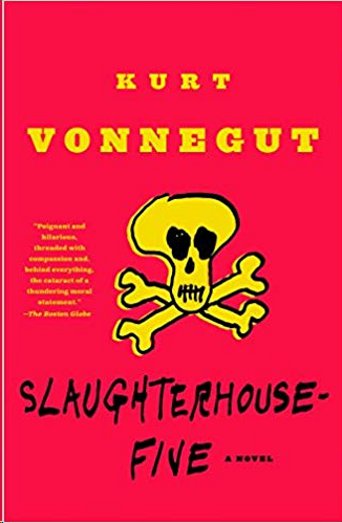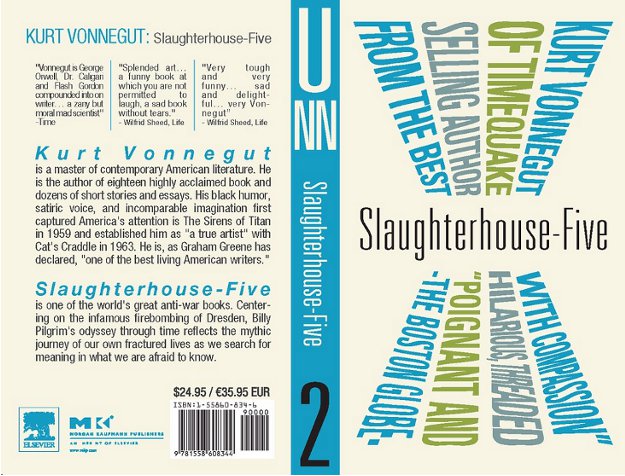Remembering the Genius of Kurt Vonnegut and ‘Slaughterhouse-Five’

As a young man, few books exerted anything like the formative power held by Kurt Vonnegut's Slaughterhouse-Five. Despite the grim acceptance of a world with conflict and war, Vonnegut still fell into writing an anti-war book, perhaps an anti-war book highly ranked among the best. This year marks the 50th anniversary of its publication, and, accordingly, Modern Library has released a new edition with a foreword by Kevin Powers. And, as the foreword shows in splendid detail, the lessons of Slaughterhouse-Five are just as relevant today as they were in 1969.
Early on, the reader is given a view of exactly what Vonnegut's targets might be. By picking the name “The Children's Crusade” as a subtitle, not only did Vonnegut draw a comparison between selling children off to slavery and sending them off to war (even one that was justified), he also took on a target more familiar to the world of 1969 than today: Dwight D. Eisenhower and his memoir, Crusade in Europe.
In the author's tale in which the tale of Billy Pilgrim is embedded, we see a clear indictment of the “war story” as it may have been developing by Mary O'Hare: “You'll pretend you were men instead of babies, and you'll be played in the movies by Frank Sinatra and John Wayne or some of those other glamorous, war-loving, dirty old men. And war will look just wonderful, so we'll have a lot more of them. And they'll be fought by babies like the babies upstairs.” It's about as motherly a sentiment as could be written.

Something of a sticking point to the reader acquainted with the valorization of past generations and the American fighting man in general is the characterization of the soldiers. The most poignant examples would be Roland Weary's fixation on violence and perverse pornographic picture, and Paul Lazarro taking pleasure in sadistically killing a dog. There is also an adverse selection mechanism at play: The two scouts, who are unquestionably good soldiers, are shot, as is Edgar Derby, a stand-in for civic virtue. One is at one point informed by a German that, “All the real soldiers are dead.” Even if it is 1944 and the conflict is nearing its end, especially for the Germans, the point is clear. Although one is forced to wonder about the biographical details of Vonnegut's life, or the authorial narrator trying to write a book between Vonnegut and Billy Pilgrim, if such things might be allowed to creep into a review, might provide supporting a diagnosis of survivor's guilt.
Aside from Vonnegut's commentary on war and its effects on society, Slaughterhouse-Five paints an astounding picture of a the combined effects, in Billy, of post-traumatic stress disorder and a traumatic brain injury. He's “unstuck”: in time, flashing back and forward with no clear trigger effects and no obvious narrative logic. If it's confusing for the reader, it's worse for Billy. While one might think of Oliver Wendell Holmes rubbing his fingers over the holes in his old Civil War uniform as one possibility for the mental scarring of conflict, this is another more frightening possibility.
And what of Tralfamador? Through providing the reader an alternative vision of seeing the world, with all of history at once, the extraterrestrials give the reader a perspective of what the tragic view of history might actually look like. Whether Billy is mad or not, there is something sane about the Tralfamadorians' perspective.
This momentous occasion has been marked by The New York Times, which deftly captured the frustration and anger which gave rise to Vonnegut's novel with an anecdote relayed by his daughter, Nanette. Vonnegut had become so irate at the Vietnam War's misrepresentation, often shouting “liars” at the television, that he took to writing to show people war as it really was (away from the cameras).

Despite the enmity with which the book was greeted during its publication, for the use of profane language that so often works as a sort of bolster for censorship, according to The Guardian's Sam Jordison, it was also seen as a classic and critically well-received.
While some might wonder what a book from the Vietnam era can teach us today, Slaughterhouse-Five has something even for the most vociferous skeptics. Even the most well-supported arguments of topicality can be met by the sheer persistence of conflict: Our much enlightened times are still rife with opportunities for the young to die on foreign shores.
Author Bio:
Adam Gravano is a contributing writer at Highbrow Magazine.
For Highbrow Magazine































































































































































































































































































































